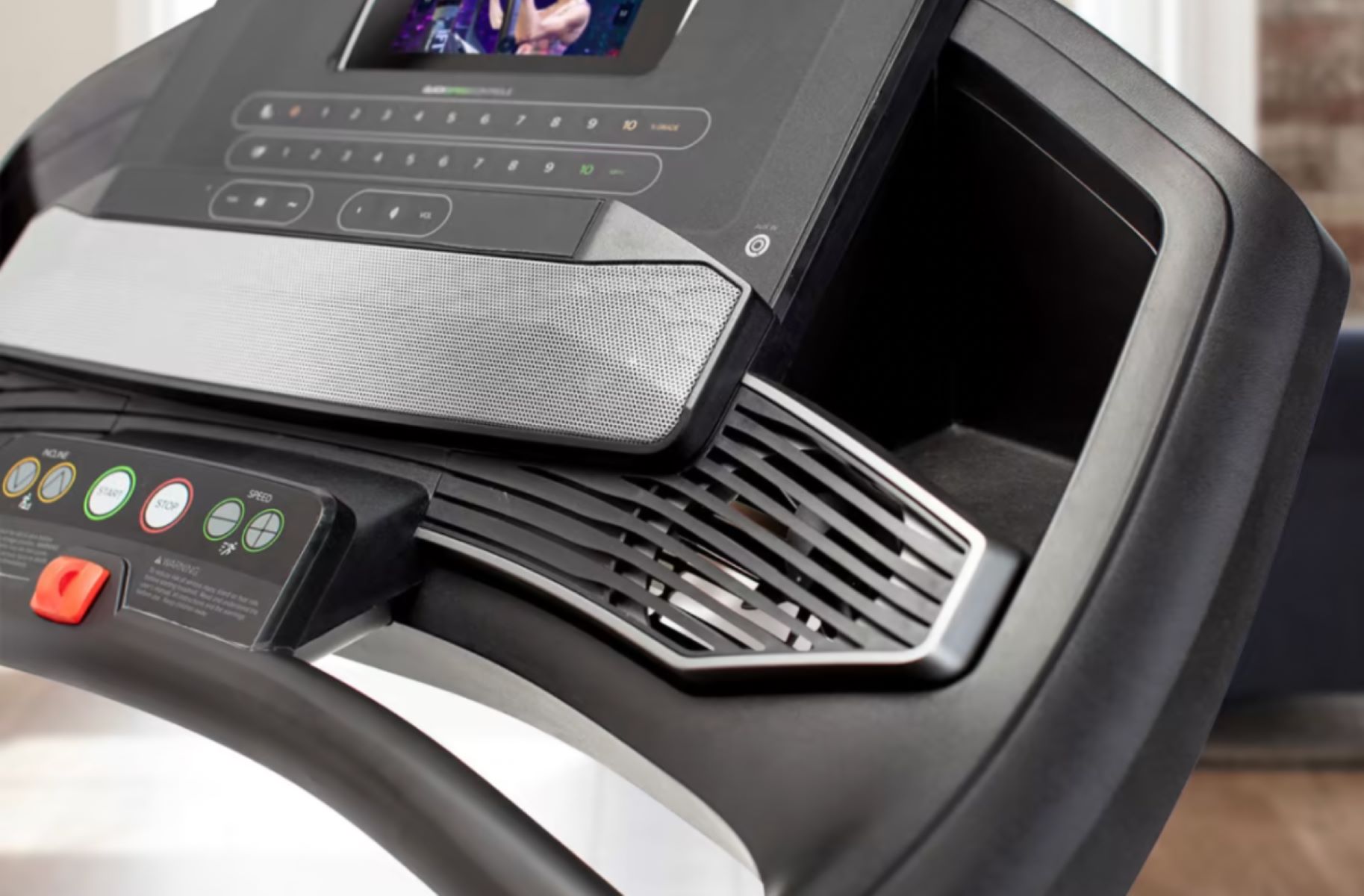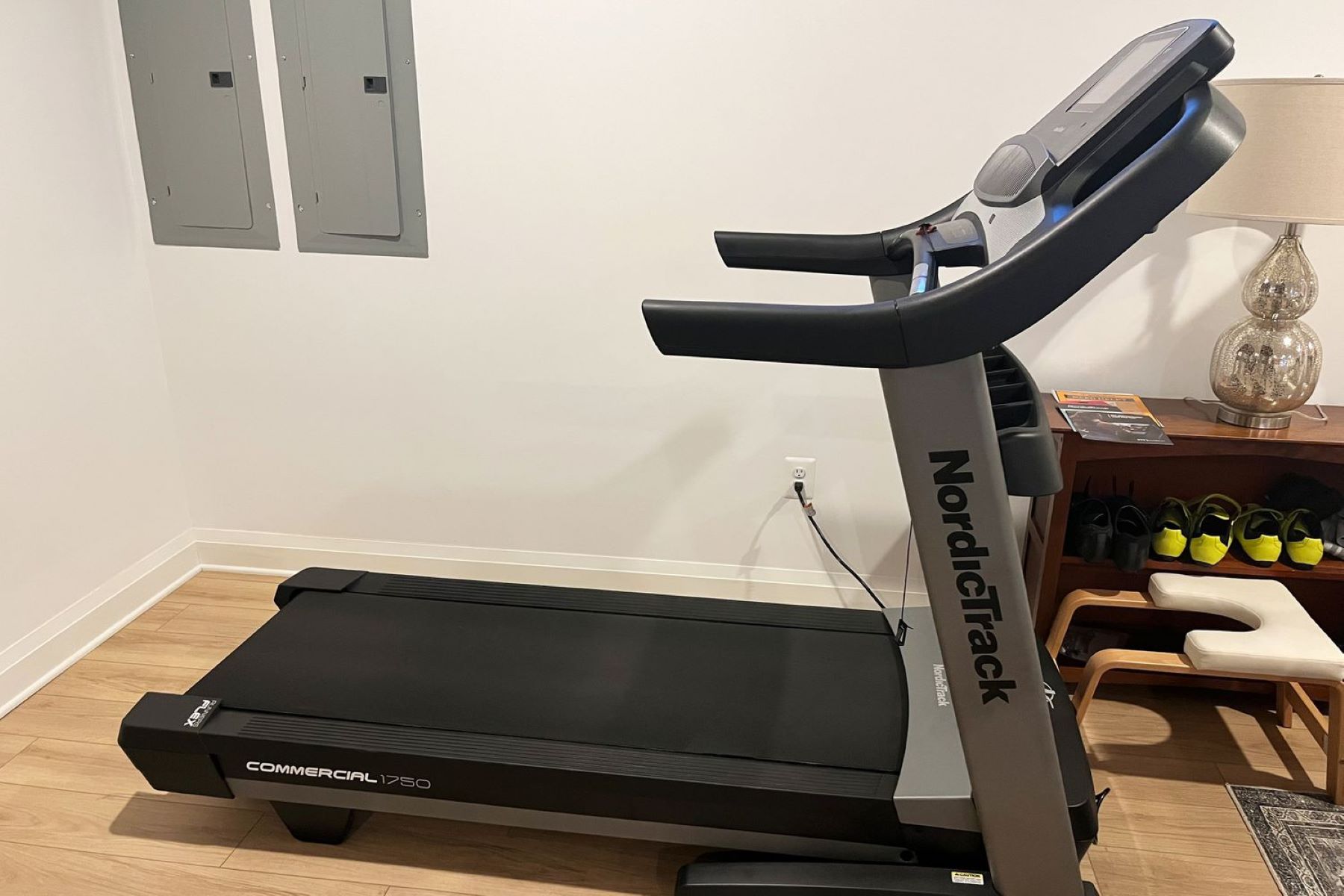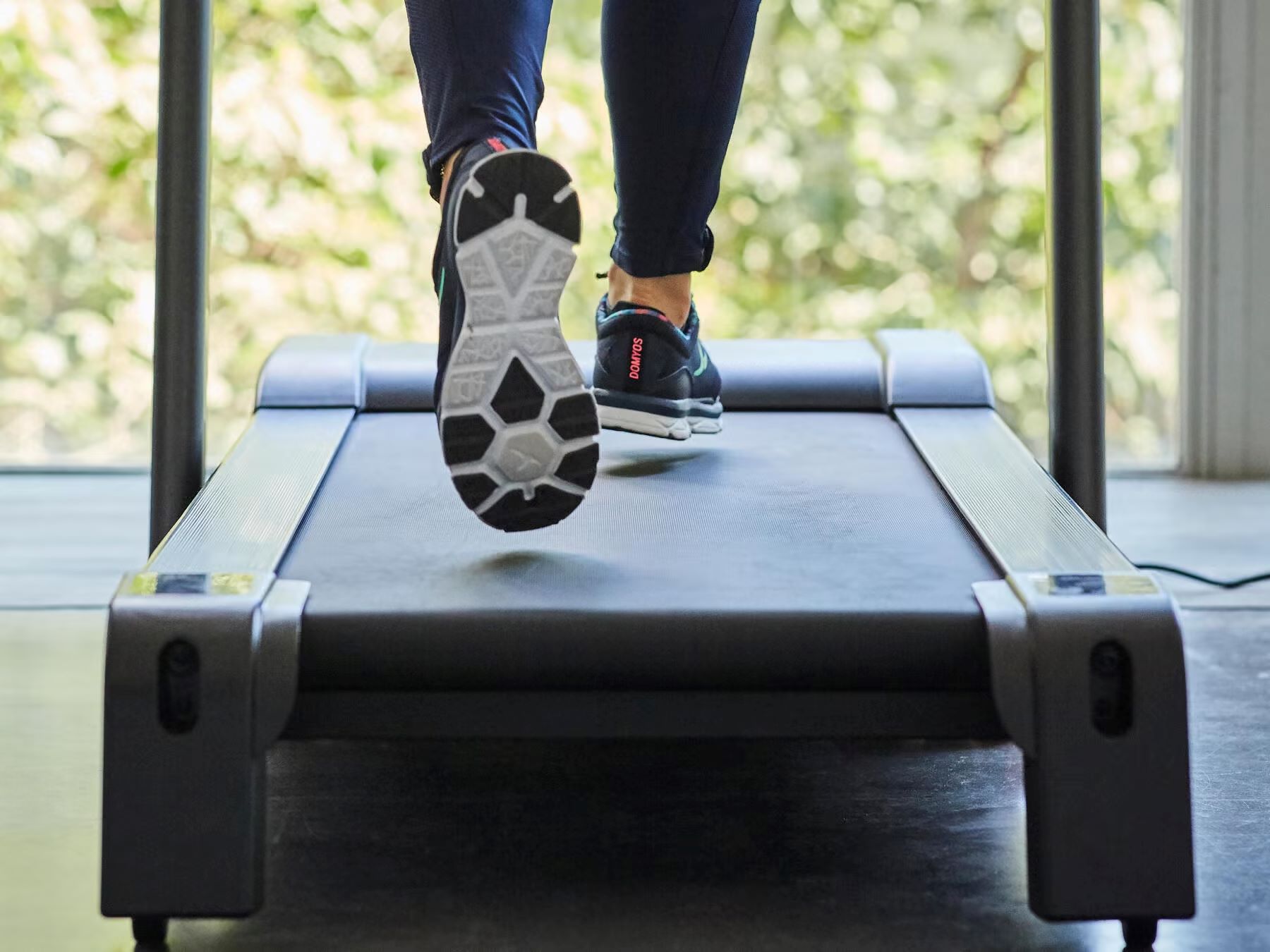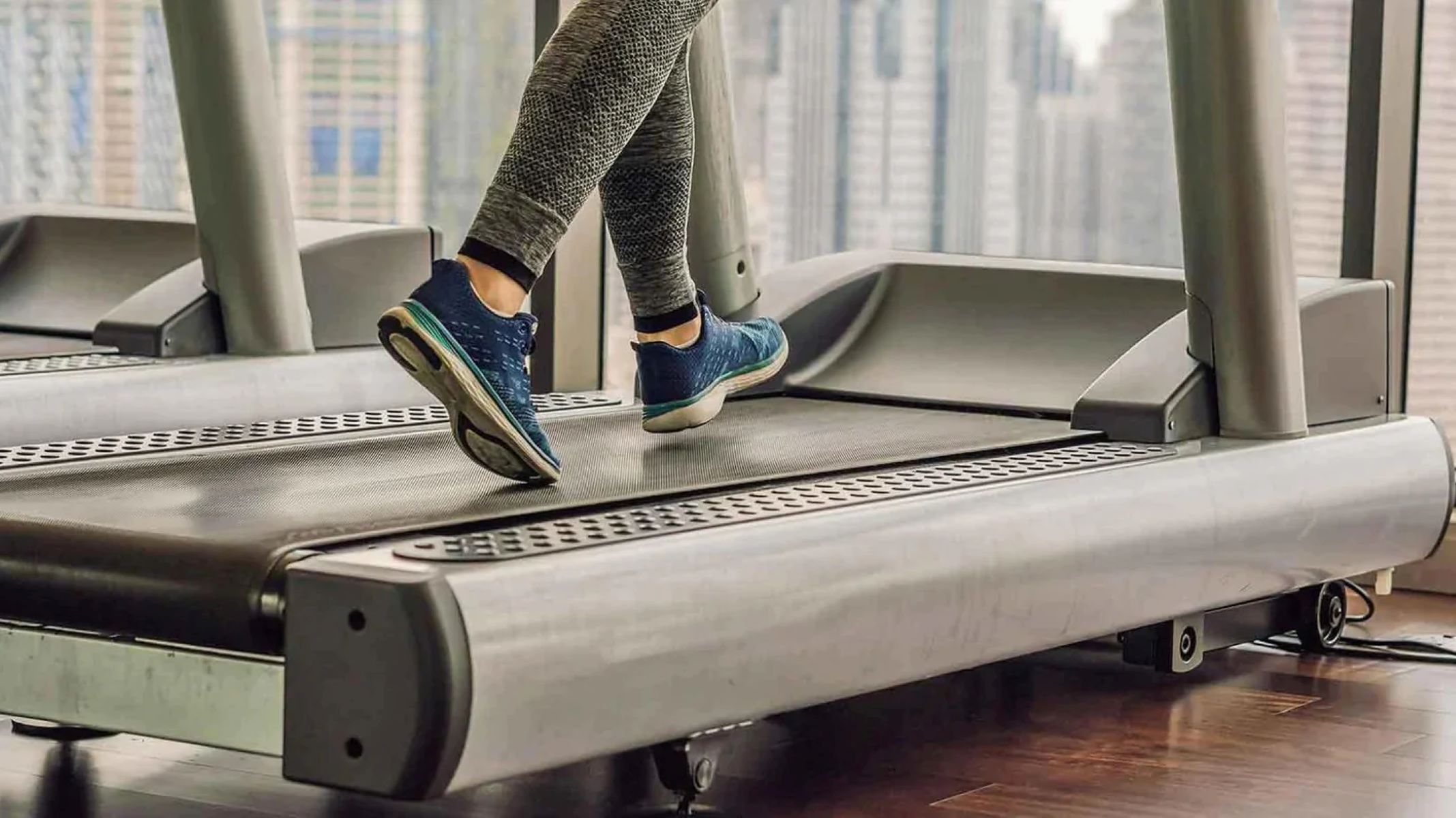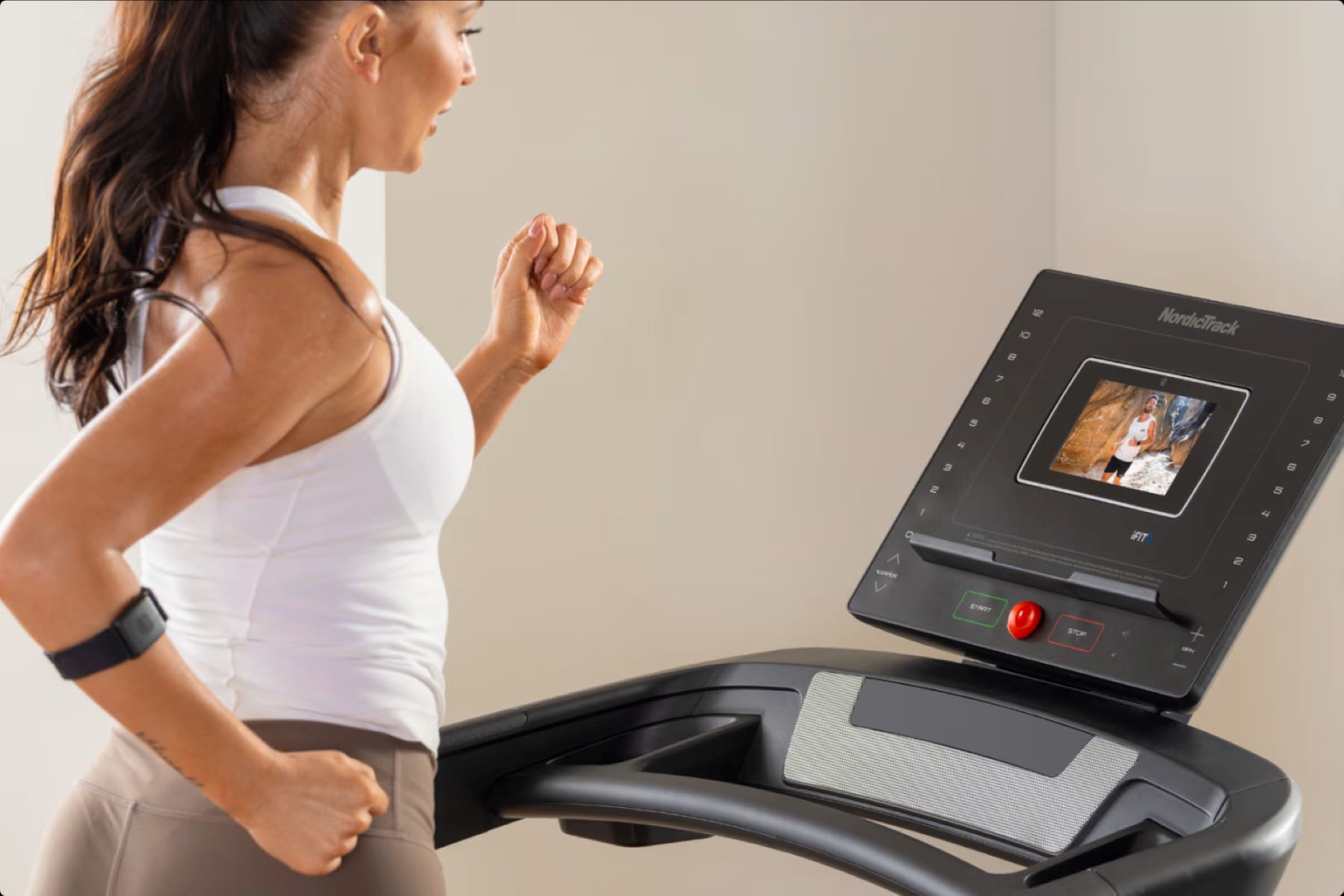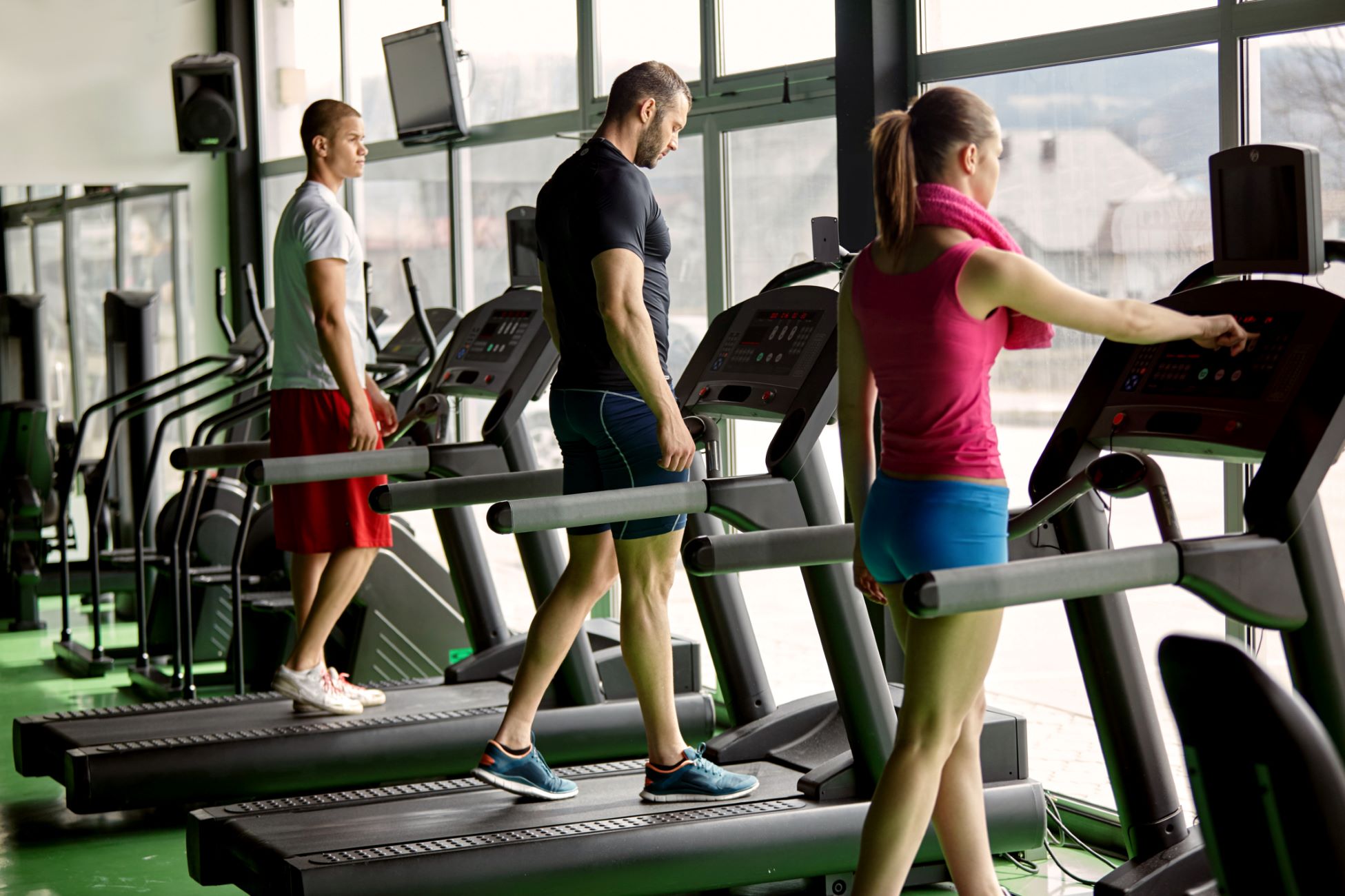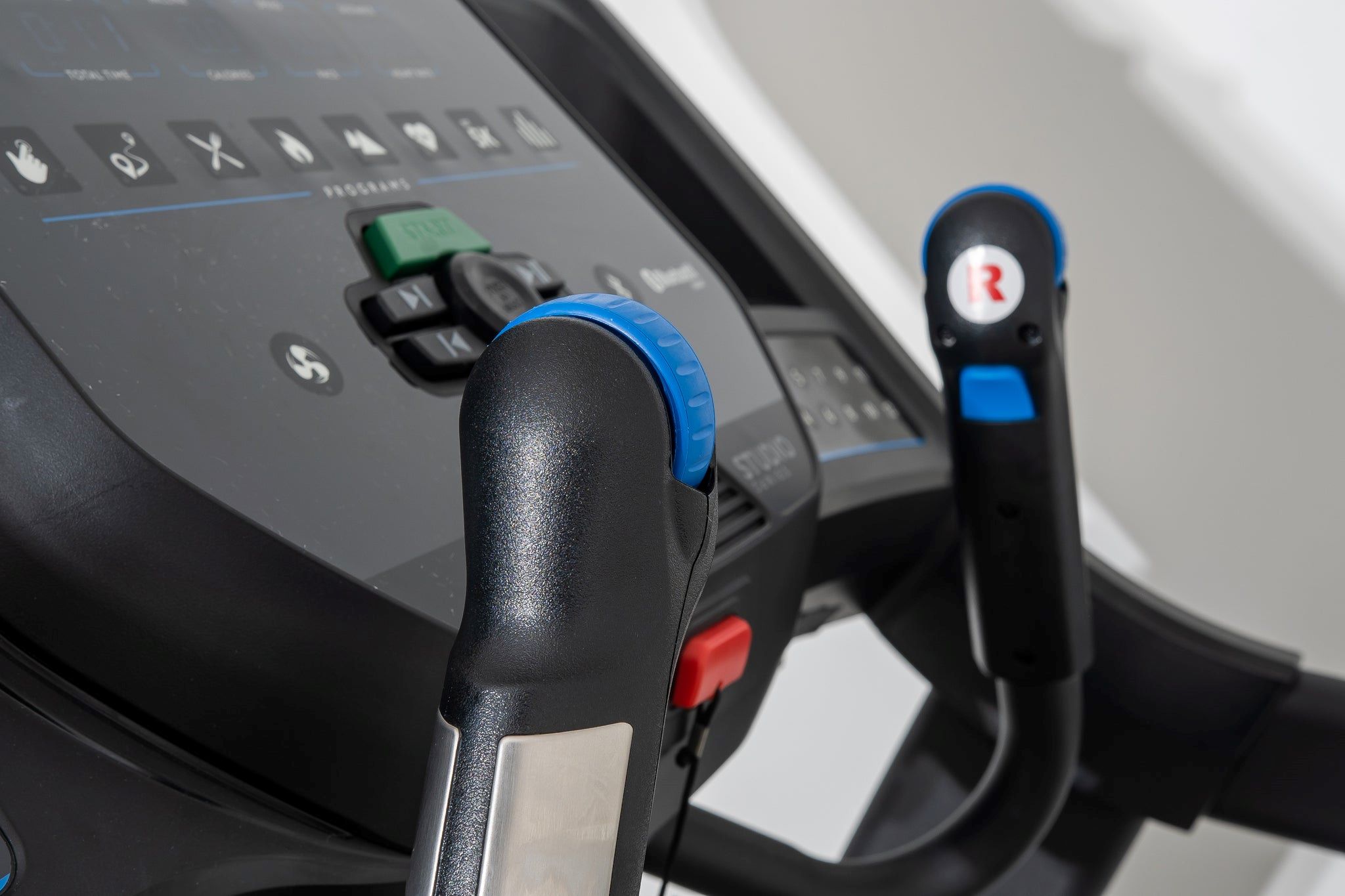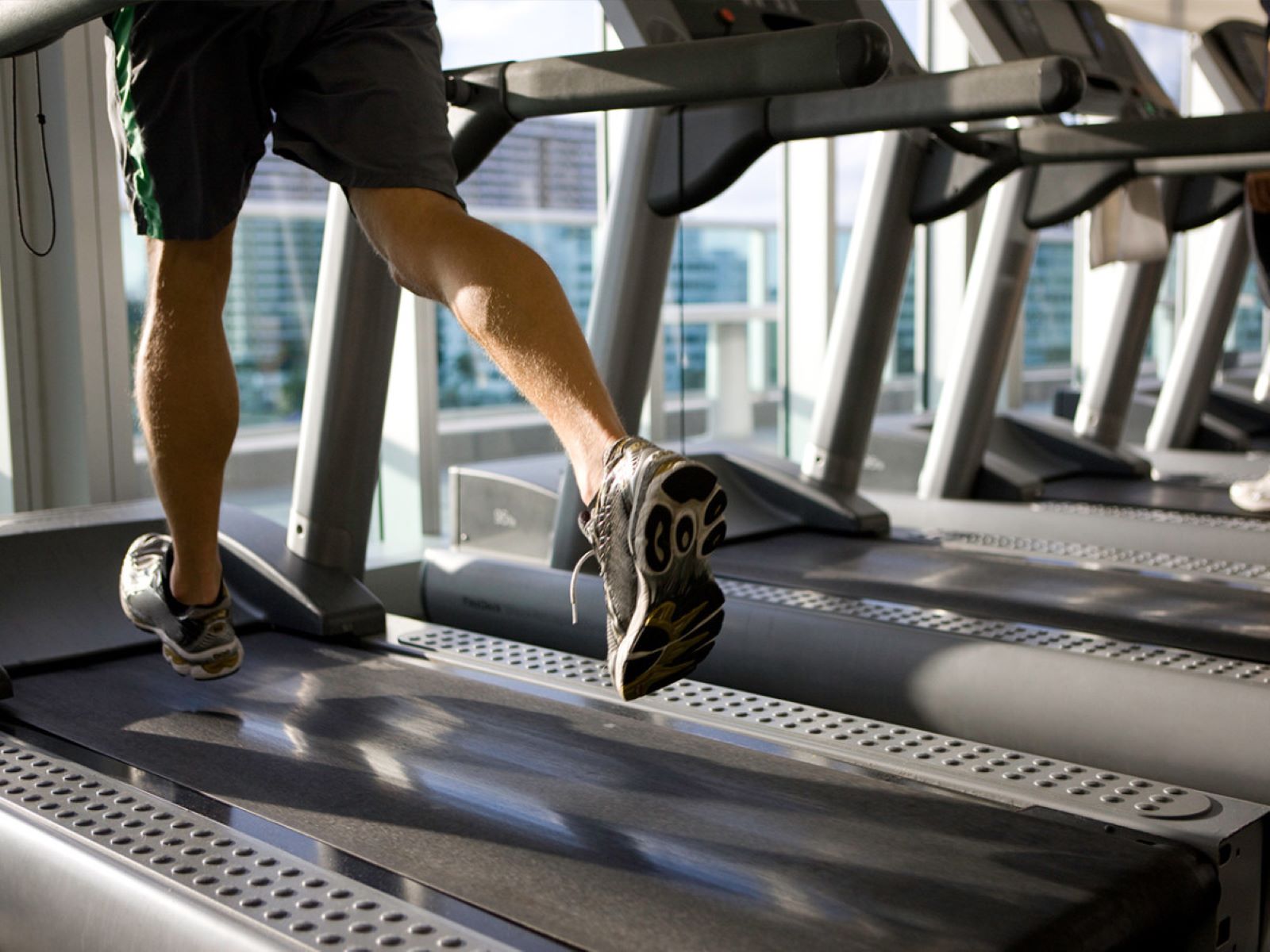

Featured
A Guide To Doing Treadmill Workouts
Modified: May 22, 2024
Get an effective and versatile treadmill workout with our featured fitness equipment. Achieve your fitness goals with our range of innovative features, designed to maximize your results.
Introduction
Welcome to the world of treadmill workouts! Whether you are a seasoned athlete or just starting your fitness journey, incorporating treadmill workouts into your routine can bring a multitude of benefits. The treadmill is a versatile piece of equipment that allows you to walk, jog, or run indoors, regardless of the weather outside.
In this article, we will explore the various aspects of treadmill workouts, including the benefits they offer, tips for choosing the right treadmill, effective warm-up and cooldown routines, and different training techniques to maximize your results.
When it comes to staying fit and healthy, consistency is key. Treadmill workouts provide a convenient and efficient way to stay active, whether it’s in the comfort of your own home or at the gym. Plus, with advancements in technology, modern treadmills offer a wide range of features and customizable settings to suit your individual needs and goals.
From burning calories and improving cardiovascular health to increasing endurance and building strength, a treadmill workout can target multiple areas of fitness. Additionally, walking or running on a treadmill reduces the impact on your joints compared to outdoor surfaces like concrete or asphalt, making it a suitable choice for individuals with joint issues or those recovering from injuries.
With all its benefits, it’s no wonder that treadmill workouts have gained popularity amongst fitness enthusiasts. The controlled environment allows you to monitor and adjust factors such as speed, incline, and duration, enabling you to progressively challenge your body and push your limits.
In the upcoming sections, we will delve deeper into the specifics of treadmill workouts, including interval training, endurance training, incline and decline workouts, high-intensity interval training (HIIT), and the comparison between running and walking on a treadmill. Additionally, we’ll provide essential safety tips to ensure a worry-free workout experience.
So, let’s lace up our shoes and dive into the world of treadmill workouts, where you can elevate your fitness journey and achieve your goals with each stride!
Benefits of Treadmill Workouts
Treadmill workouts offer a wide range of benefits that make them an excellent choice for individuals looking to improve their fitness level. Whether you’re a beginner or an experienced athlete, here are some key advantages of incorporating treadmill workouts into your routine.
- Convenience: One of the major benefits of treadmill workouts is their convenience. With a treadmill in your home or access to one at the gym, you can exercise at any time, regardless of the weather conditions outside. This eliminates obstacles such as rain, snow, extreme heat, or darkness that may prevent you from going for an outdoor run or walk.
- Controlled Environment: Treadmills provide a controlled environment where you can adjust and monitor various factors, such as speed, incline, and duration. This allows you to customize your workout according to your fitness level, goals, and personal preferences. Whether you want to increase the intensity of your workout or gradually build your endurance, the treadmill gives you the flexibility to do so.
- Joint-Friendly: Running or walking on a treadmill is generally easier on your joints compared to outdoor surfaces like concrete or asphalt. The belt on the treadmill provides some cushioning, which helps reduce the impact on your knees, ankles, and hips. This makes treadmill workouts a suitable option for individuals with joint issues or those recovering from injuries.
- Cardiovascular Health: Treadmill workouts are an effective way to improve cardiovascular health. The consistent movement of running or walking on the treadmill increases your heart rate, strengthening your heart muscles and improving blood circulation throughout your body. Regular treadmill workouts can help lower your risk of cardiovascular diseases and improve overall heart health.
- Weight Management: Treadmill workouts are highly effective for weight management and burning calories. Running or walking on the treadmill can help you create a calorie deficit, which is essential for weight loss. By increasing the intensity or duration of your treadmill workouts, you can maximize calorie burn and accelerate your weight loss goals.
- Versatility: Treadmills offer a wide range of workout options to suit different fitness goals. From walking and jogging to interval training and high-intensity sprints, you can tailor your treadmill workouts to target specific areas such as endurance, speed, or overall cardiovascular fitness. This versatility allows you to continually challenge yourself and prevent workout plateau.
With these incredible benefits and the convenience they offer, it’s no wonder that treadmill workouts have become a popular choice for individuals of all fitness levels. So, lace up those sneakers and get ready to reap the rewards of incorporating treadmill workouts into your fitness routine!
Choosing the Right Treadmill
When it comes to choosing the right treadmill, there are several factors to consider to ensure you find the perfect fit for your fitness needs and goals. Here are some key considerations to keep in mind:
- Budget: Determine your budget before diving into the world of treadmills. There is a wide price range when it comes to treadmills, so it’s important to establish how much you’re willing to invest. Keep in mind that while higher-priced treadmills may offer more features and durability, there are also budget-friendly options available that can still provide a satisfactory workout experience.
- Space: Assess the available space in your home or gym where you plan to place the treadmill. Measure the area to ensure there’s enough room for the treadmill’s dimensions. Consider whether you need a folding treadmill for easy storage or if a non-folding treadmill fits your space requirements.
- Motor Power: The motor is a critical component of a treadmill. Look for a treadmill with a motor power that matches your intended usage. If you plan on using the treadmill for walking or light jogging, a motor with a lower horsepower (around 2.0-2.5 HP) should suffice. However, if you’re a serious runner or plan on doing intense workouts, opt for a treadmill with a more powerful motor (around 3.0-4.0 HP) to support higher speeds and heavier usage.
- Running Surface: Consider the size of the running surface or deck when choosing a treadmill. A larger deck provides more room for comfortable running or walking. Aim for a deck length of at least 50 inches and width of 20 inches to accommodate a natural stride. If you have a taller or longer stride, consider a longer deck length to ensure unrestricted movement.
- Incline and Speed Range: Look for a treadmill with adjustable incline levels to add variety and challenge to your workouts. Most treadmills offer incline ranges from 0% to 15%. Additionally, consider the speed range of the treadmill. If you’re an avid runner, choose a treadmill that can reach the desired speed you plan to achieve during your workouts.
- Programs and Features: Determine what features and workout programs are important to you. Most treadmills offer pre-set workout programs that cater to different goals such as weight loss, interval training, or endurance building. Other features to consider include heart rate monitoring, built-in speakers, touchscreen displays, and compatibility with fitness apps or devices.
- Warranty and Customer Support: Check the warranty coverage for the treadmill and make sure it offers sufficient protection for the machine. Look for warranties that cover the motor, parts, and labor. Additionally, research the reputation of the treadmill brand in terms of customer support and reliability. Read reviews and testimonials from other users to gain insights into the durability and quality of the treadmill.
By considering these factors and doing thorough research, you can find a treadmill that aligns with your budget, space, and fitness requirements. Remember, investing in a quality treadmill that suits your needs can make a significant difference in the effectiveness and longevity of your workouts.
Proper Warm-up and Cooldown
Before hopping onto the treadmill and beginning your workout, it’s crucial to properly warm up your body and adequately cool down afterwards. Incorporating a warm-up and cooldown routine into your treadmill sessions helps prepare your muscles, prevent injury, and facilitate recovery. Here’s how to do it right:
Warm-up:
The warm-up phase is essential to gradually increase your heart rate, warm up your muscles, and improve mobility. Start your treadmill session with a few minutes of brisk walking or light jogging to gradually elevate your heart rate. This helps loosen up the muscles and prepares your body for more intense exercise. Focus on maintaining good form and posture during this phase.
In addition to aerobic preparation, consider incorporating dynamic stretching exercises to further warm up different muscle groups. Perform exercises such as leg swings, arm circles, walking lunges, or torso twists to gently stretch and activate the major muscle groups you’ll be engaging during your treadmill workout.
Remember, the goal of the warm-up is to increase blood flow, raise core body temperature, and mentally prepare for the upcoming workout. Aim for at least 5-10 minutes of warm-up before moving on to the main part of your treadmill session.
Cooldown:
The cooldown phase is just as important as the warm-up and should not be skipped. Cooling down helps gradually lower your heart rate, prevent post-workout dizziness, and allows your body to recover more efficiently.
After completing your treadmill workout, gradually reduce the intensity and speed of the treadmill to initiate the cooldown phase. Spend 5-10 minutes walking at a slow pace or even stretching to promote muscle recovery and flexibility. This will help prevent muscle soreness and stiffness in the hours and days following your workout.
Incorporate static stretching exercises during the cooldown phase to improve flexibility and help relax the muscles. Focus on stretching the major muscle groups such as quads, hamstrings, calves, and hips. Hold each stretch for 15-30 seconds without bouncing or forcing the stretch.
By dedicating time to both the warm-up and cooldown phases of your treadmill workout, you’ll minimize the risk of injury, enhance overall performance, and optimize your recovery.
Remember, the warm-up and cooldown are integral parts of your training routine and should not be overlooked. Take the necessary time to properly prepare your body before diving into the main part of your treadmill workout and allow it to gradually recover and return to its resting state afterwards.
Interval Training on the Treadmill
Interval training is a highly effective and time-efficient method of maximizing your treadmill workouts. It involves alternating between periods of high-intensity exercise and recovery or lower-intensity exercise. This technique not only helps improve cardiovascular fitness but also boosts calorie burn and enhances overall endurance. Here’s how to incorporate interval training into your treadmill workouts:
1. Determine your intervals:
Start by deciding on the duration of your high-intensity bursts and recovery periods. For beginners, a common approach is to start with a 1:1 ratio, where the high-intensity interval lasts for the same amount of time as the recovery period. For example, sprint for 30 seconds, followed by a 30-second recovery jog or walk. As you progress, you can increase the intensity and adjust the interval ratio to challenge yourself further.
2. Warm up:
Begin your interval training session with a proper warm-up, as mentioned earlier. Spend a few minutes walking or jogging at a moderate pace to prepare your body for the upcoming intensity. This will help prevent injuries and allow you to perform at your best during the high-intensity intervals.
3. Start with a moderate pace:
Begin your workout with a moderate pace, allowing your body to gradually adapt to the intensity. It’s important to find a comfortable starting point that you can sustain throughout the entire workout session. Start with a light jog or brisk walk for the recovery periods and a faster jog or moderate run for the high-intensity intervals.
4. Increase intensity during high-intensity intervals:
During the high-intensity intervals, push yourself to a pace that challenges you. Increase the speed to a sprint or near-sprint level, keeping in mind that you should be able to maintain good form and control. Focus on a smooth and efficient running/walking technique, utilizing your arms and engaging your core muscles.
5. Active recovery:
During the recovery periods, slow down your pace and allow your heart rate to decrease. This active recovery helps your body recover and replenish energy stores for the upcoming high-intensity intervals. Reduce the speed to a light jog or walk, catching your breath and preparing yourself for the next burst of intensity.
6. Repeat and progress:
Continue alternating between high-intensity intervals and recovery periods for the desired duration of your workout. Aim to complete at least 15-20 minutes of interval training, gradually increasing the duration as your fitness level improves. As you progress, you can also experiment with different interval ratios, such as 2:1 or even 3:1, to challenge yourself further.
7. Cool down and stretch:
Complete your interval training session with a proper cooldown, as mentioned earlier. Gradually decrease the speed and intensity of the treadmill, allowing your heart rate to return to normal. Finish with static stretching exercises to improve flexibility and help your muscles recover.
Interval training on the treadmill offers a variety of benefits, including increasing cardiovascular fitness, boosting calorie burn, and enhancing overall endurance. It allows you to maximize your time while challenging your body in a controlled and efficient manner. So, lace up your shoes and get ready to experience the power of interval training on the treadmill!
Endurance Training on the Treadmill
Endurance training on the treadmill is a fantastic way to build cardiovascular stamina, improve your endurance, and increase your overall aerobic capacity. Whether you’re training for a long-distance race or simply want to improve your endurance level, the treadmill provides a controlled environment to focus on prolonging your exercise duration. Here are some tips to incorporate endurance training into your treadmill workouts:
1. Set a duration goal:
Start by setting a duration goal for your treadmill workout. Determine the amount of time you want to spend running or walking continuously without any breaks. Aim to gradually increase this time as your endurance improves. For beginners, a good starting point might be 20-30 minutes, and from there, you can progress to longer durations.
2. Pace yourself:
During your endurance training, it’s crucial to maintain a consistent pace that you can sustain for the duration of your workout. Avoid starting too fast and exhausting yourself early on. Find a comfortable pace that allows you to breathe comfortably and maintain good form throughout the entire workout.
3. Utilize the incline:
Adding incline to your treadmill workouts can simulate outdoor running conditions and make your endurance training more challenging. Begin by setting a moderate incline, around 1-3%, and gradually increase it as you become more comfortable. The slight incline will engage different muscles and mimic the resistance of outdoor running.
4. Mental strategies:
During long endurance sessions on the treadmill, it’s important to stay mentally engaged and motivated. Break down your workout into smaller segments or focus on reaching certain landmarks (e.g., time, distance). You can also distract yourself by listening to music, podcasts, or audiobooks, or watching a show or movie while you run.
5. Hydration and fueling:
For longer endurance training sessions, be sure to hydrate properly and fuel your body with the necessary nutrients. Drink water before, during, and after your workout to maintain hydration. If your training session extends beyond an hour, consider fueling with easily digestible carbohydrates or sports drinks to replenish energy stores.
6. Gradual progression:
Gradually increase the duration of your endurance training sessions as your fitness level improves. Add a few extra minutes each week to challenge your body and continue making progress. However, it’s important to listen to your body and avoid overdoing it. Increase the duration at a comfortable pace that allows for adequate recovery.
7. Monitor heart rate:
Consider monitoring your heart rate during endurance training sessions to keep track of your intensity level. You can use a heart rate monitor or the built-in heart rate sensors on the treadmill. Aim to maintain a moderate intensity, where you can carry on a conversation but still challenge your cardiovascular system.
Endurance training on the treadmill is a valuable tool for improving cardiovascular stamina, building endurance, and preparing for longer runs or races. By setting duration goals, pacing yourself, utilizing incline, staying mentally engaged, and gradually increasing the duration, you’ll see significant improvements in your endurance and overall fitness level. So lace up your shoes, hop on the treadmill, and embrace the challenge of endurance training!
Incline and Decline Training
Incorporating incline and decline training into your treadmill workouts can add a new dimension to your training routine, targeting different muscle groups and simulating outdoor running conditions. By adjusting the treadmill’s incline or decline settings, you can challenge yourself in unique ways and enhance the effectiveness of your workouts. Here’s how to make the most of incline and decline training on the treadmill:
Incline Training:
Adding incline to your treadmill workouts helps simulate uphill running or walking, providing a more challenging workout for your lower body. Here’s how to incorporate incline training:
- Gradual increase: Start with a low incline, around 1-3%, and gradually increase it as you become more comfortable and stronger. This allows your muscles to adapt to the increased resistance over time.
- Engage different muscles: Running or walking uphill engages different muscles compared to flat surface running. It targets your glutes, hamstrings, and calves more intensely, helping to strengthen and tone those muscle groups.
- Benefits of uphill training: Incline training helps improve lower body strength, cardiovascular endurance, and overall running efficiency. Running or walking uphill also burns more calories compared to exercising on a flat surface, making it an excellent choice for weight loss or intensified workouts.
Decline Training:
Using the decline feature on the treadmill can simulate downhill running or walking, activating different muscle groups and providing a unique workout experience. Here’s how to incorporate decline training:
- Gradual decrease: Start with a shallow decline of 1-2% and gradually increase it as you become more comfortable. This allows your body to adapt to the altered running mechanics and engage different muscles.
- Strengthen different muscles: Running or walking downhill primarily targets your quadriceps and shins, providing an opportunity to strengthen and stabilize these muscle groups.
- Benefits of downhill training: Decline training can help improve stride length, running efficiency, and overall muscular balance. It’s also a great way to incorporate variety and challenge into your treadmill workouts.
It’s important to note that both incline and decline training may place additional stress on your lower body, particularly your knees. If you have any existing knee issues or concerns, consult with a healthcare professional before incorporating intense incline or decline workouts into your exercise routine.
By incorporating incline and decline training into your treadmill workouts, you can increase the intensity, recruit different muscle groups, and simulate outdoor running conditions. Whether you’re looking to improve strength, endurance, or overall running performance, incline and decline training on the treadmill can be a valuable addition to your fitness routine. So, adjust that treadmill incline, embrace the challenge, and watch your fitness level soar!
HIIT (High-Intensity Interval Training) on the Treadmill
High-Intensity Interval Training (HIIT) is a popular and effective training method that involves short bursts of intense exercise followed by brief recovery periods. HIIT on the treadmill is a fantastic way to torch calories, boost cardiovascular fitness, and improve overall endurance. Here’s how to incorporate HIIT into your treadmill workouts:
1. Set your intervals:
Begin by determining the duration of your high-intensity intervals and recovery periods. For example, you might sprint at maximum effort for 30 seconds and then recover at a slower pace for 60 seconds. The key is to alternate between the intense bursts and recovery periods throughout your workout.
2. Warm up:
Before diving into HIIT, begin with a warm-up as mentioned earlier. Spend a few minutes walking or jogging at a moderate pace to prepare your body for the intense intervals.
3. Intense bursts:
During the high-intensity intervals, push yourself to your maximum effort. Increase the speed of the treadmill to a sprint or near-sprint level, challenging yourself both mentally and physically. Maintain good form while focusing on quick bursts of intense effort.
4. Recovery periods:
During the recovery periods, slow down the pace significantly to allow your heart rate to decrease and your body to recover. This active recovery phase is crucial to prepare you for the next intense interval. Reduce the speed to a light jog or walk, catching your breath and allowing your muscles to recover.
5. Repeat and progress:
Continue alternating between the intense bursts and recovery periods for the desired duration of your workout. Aim for at least 15-20 minutes of HIIT, gradually increasing the duration as your fitness level improves. Over time, you can also increase the intensity or adjust the interval ratios to challenge yourself further.
6. Cool down and stretch:
Complete your HIIT session with a proper cooldown as mentioned earlier. Gradually decrease the speed and intensity of the treadmill, allowing your heart rate to return to normal. Finish with static stretching exercises to improve flexibility and aid in muscle recovery.
HIIT on the treadmill offers numerous benefits, including increased calorie burn, improved cardiovascular fitness, and enhanced endurance. By incorporating short bursts of intense effort followed by recovery periods, you’ll challenge your body, boost your metabolism, and see significant results. Remember to listen to your body, gradually increase the intensity and duration of your HIIT sessions, and always prioritize proper warm-up and cooldown routines.
So, lace up your shoes, turn up the intensity, and experience the power of HIIT on the treadmill!
Running vs. Walking on a Treadmill
The choice between running and walking on a treadmill depends on your fitness goals, physical condition, and personal preferences. Both running and walking have their own benefits and can be effective forms of exercise. Here’s a comparison between running and walking on a treadmill to help you choose the option that best suits your needs:
1. Intensity and Calorie Burn:
Running on a treadmill generally burns more calories compared to walking, as it requires more energy and engages more muscles. Running is a high-intensity exercise that elevates your heart rate and increases calorie expenditure. However, walking on a treadmill can still be an effective option, especially for beginners or individuals looking for low-impact exercises.
2. Cardiovascular Health:
Both running and walking on a treadmill offer cardiovascular benefits. These exercises increase your heart rate, improve blood circulation, and strengthen your heart muscles. Running tends to provide a more vigorous cardiovascular workout, but walking at a brisk pace can still be beneficial for maintaining heart health.
3. Impact on Joints and Injury Risk:
Running on a treadmill can place more stress on your joints, particularly your knees and ankles. The repetitive impact of running can increase the risk of injuries. Walking, on the other hand, is a lower-impact exercise that puts less strain on your joints. It can be a suitable option for individuals with joint issues or those recovering from injuries.
4. Time and Convenience:
Running on a treadmill allows you to cover more distance in less time compared to walking. This makes it a time-efficient option for those with a busy schedule or looking to maximize their calorie burn. However, walking at a moderate or brisk pace can still provide significant health benefits, and it may be more suitable for individuals who prefer a less intense workout.
5. Fitness Goals and Personal Preferences:
The choice between running and walking on a treadmill ultimately depends on your personal fitness goals and preferences. If you’re training for a race, seeking weight loss, or looking to improve cardiovascular endurance, running may be the more suitable choice. However, if you prefer a lower-impact exercise, want to maintain joint health, or prefer a more leisurely workout, walking on a treadmill can still be highly effective.
Remember, the most important aspect is to engage in regular physical activity that suits your fitness level and brings you joy. Whether you choose to run or walk on a treadmill, the key is to be consistent and maintain a routine that works best for you.
Consult with a healthcare or fitness professional if you have any underlying health conditions or concerns about choosing between running and walking on a treadmill. They can provide personalized advice based on your specific needs and goals.
So lace up your shoes, step on the treadmill, and embark on a fitness journey that aligns with your unique preferences and aspirations!
Treadmill Safety Tips
While treadmills offer a convenient and effective way to exercise, it’s important to prioritize safety to prevent accidents or injuries. Here are some essential treadmill safety tips to keep in mind:
- Read the manual: Familiarize yourself with the treadmill’s user manual before using it. Understand the various features, controls, and safety precautions specific to your treadmill model.
- Proper footwear: Wear appropriate footwear with good support and traction while using the treadmill. Avoid walking or running barefoot or wearing shoes that are excessively worn or have slippery soles.
- Warm-up and cooldown: Always warm up your body with light cardio and dynamic stretching exercises before starting your treadmill workout. Gradually increase the intensity and duration, and remember to cool down and stretch afterward to prevent muscle strains or injuries.
- Use safety features: Familiarize yourself with the emergency stop button and safety clip or lanyard that attaches to your clothing. These features allow you to quickly stop the treadmill in case of any mishaps or loss of balance.
- Start slowly: Begin your treadmill workout at a slow pace and gradually increase the speed and intensity. Sudden increases in speed or incline can lead to loss of balance or accidents.
- Maintain proper form: Maintain good posture, with your head up, shoulders relaxed, and core engaged while using the treadmill. Avoid leaning forward or holding onto the handrails, as it can disrupt your balance and potential cause injury.
- Stay hydrated: Keep a water bottle nearby and stay hydrated throughout your treadmill workout. Dehydration can lead to dizziness or fatigue, increasing the risk of accidents.
- Use the safety clip: Attach the safety clip or lanyard to your clothing and clip it onto the treadmill. This is an important safety measure that will immediately stop the treadmill in case of a fall or loss of balance.
- Stay focused and alert: Avoid distractions such as using your phone, reading, or watching videos while using the treadmill. Keep your full attention on your workout to maintain proper form and avoid accidents.
- Know your limits: Listen to your body and exercise within your limits. If you experience any pain, dizziness, or shortness of breath, stop the treadmill and seek medical attention if necessary.
- Clean and maintain your treadmill: Regularly clean the treadmill to remove dust and debris that may affect its performance. Additionally, conduct routine maintenance as per the manufacturer’s instructions to ensure the treadmill operates smoothly and safely.
Prioritizing safety while using the treadmill is essential for a worry-free workout experience. By following these safety tips, you can minimize the risk of accidents or injuries and focus on achieving your fitness goals with confidence.
If you have any specific concerns or health conditions, consult with a healthcare professional or fitness instructor for personalized guidance on using the treadmill safely.
So, hop on the treadmill, stay safe, and enjoy your rewarding fitness journey!
Conclusion
Treadmill workouts offer a versatile and convenient way to stay active, improve fitness, and achieve your health goals. Whether you prefer running or walking, incorporating different training techniques such as interval training, endurance training, and incline/decline workouts can take your treadmill sessions to the next level.
By choosing the right treadmill that fits your budget, space, and fitness needs, you can create a personalized workout routine that suits your goals and preferences. Remember to always warm up and cool down properly, paying attention to your body’s needs and adjusting the intensity as necessary.
Interval training on the treadmill allows you to maximize calorie burn and improve cardiovascular fitness. Endurance training helps build stamina, while incline and decline workouts engage different muscle groups and simulate outdoor conditions. HIIT sessions provide an intense workout in a short amount of time, and the choice between running and walking depends on your goals and physical capabilities.
While enjoying the benefits of treadmill workouts, safety should always be a priority. Use the treadmill’s safety features, maintain proper form, stay hydrated, and listen to your body’s limits. Regular maintenance and cleaning of your treadmill will ensure its longevity and performance.
Whether you’re a beginner or an experienced fitness enthusiast, the treadmill offers endless possibilities for your exercise routine. Embrace the challenge, push yourself, and remember to have fun along the way!
So, get ready to step onto the treadmill, experience the benefits of various training techniques, and embark on an exciting fitness journey towards a healthier, fitter, and stronger you!
